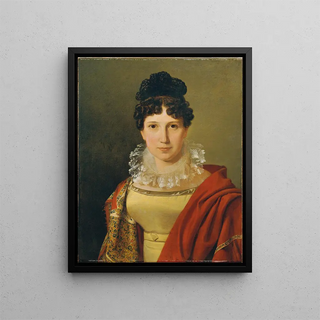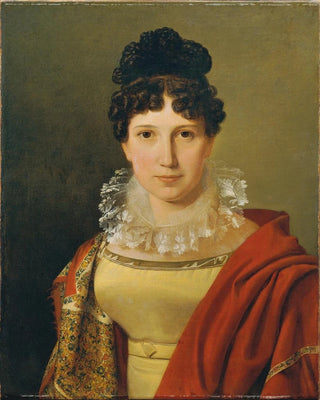Art print | Catharina Freifrau de Koudelka - Ferdinand Georg Waldmüller


View from behind

Frame (optional)
In the fascinating world of art, some works manage to transcend their era to touch the human soul. The Catharina Freifrau de Koudelka - Ferdinand Georg Waldmüller art print is a perfect example. This painting, depicting a female figure imbued with dignity and grace, invites us to explore not only the history of its subject but also that of an artist who captured deep emotions through his brush. By contemplating this piece, one feels an immediate connection with the past, an echo of the feelings and aspirations of a bygone era. The image of Catharina, elegant and resolute, is a living testament to Waldmüller’s talent and his skill in immortalizing human beauty.
Style and uniqueness of the work
Ferdinand Georg Waldmüller’s style is distinguished by its striking realism and its ability to convey the psychological subtleties of his subjects. In this art print, every detail, from the draping of the dress to the delicate expression on the face, is meticulously crafted, revealing impressive technical mastery. The color palette chosen by the artist evokes a soft and warm atmosphere, emphasizing the serenity emanating from the depicted figure. Light plays a crucial role, illuminating Catharina’s face and creating a subtle contrast with the background, which remains blurred but suggestive. This stylistic choice allows the focus to be on the central character, thus highlighting the importance of the individual in a often anonymous world. Waldmüller succeeds in capturing not only the external appearance of his model but also an emotional depth that resonates with anyone who pauses to contemplate his work.
The artist and his influence
Ferdinand Georg Waldmüller, an emblematic figure of 19th-century Austria, knew how to mark his era with an innovative approach to portraiture. Moving away from the academic conventions of his time, he paved the way for a more personal and introspective form of artistic expression. His attentive gaze on daily life and his contemporaries allowed him to create works that, although frozen in time, seem to vibrate with timeless energy.

Matte finish

View from behind

Frame (optional)
In the fascinating world of art, some works manage to transcend their era to touch the human soul. The Catharina Freifrau de Koudelka - Ferdinand Georg Waldmüller art print is a perfect example. This painting, depicting a female figure imbued with dignity and grace, invites us to explore not only the history of its subject but also that of an artist who captured deep emotions through his brush. By contemplating this piece, one feels an immediate connection with the past, an echo of the feelings and aspirations of a bygone era. The image of Catharina, elegant and resolute, is a living testament to Waldmüller’s talent and his skill in immortalizing human beauty.
Style and uniqueness of the work
Ferdinand Georg Waldmüller’s style is distinguished by its striking realism and its ability to convey the psychological subtleties of his subjects. In this art print, every detail, from the draping of the dress to the delicate expression on the face, is meticulously crafted, revealing impressive technical mastery. The color palette chosen by the artist evokes a soft and warm atmosphere, emphasizing the serenity emanating from the depicted figure. Light plays a crucial role, illuminating Catharina’s face and creating a subtle contrast with the background, which remains blurred but suggestive. This stylistic choice allows the focus to be on the central character, thus highlighting the importance of the individual in a often anonymous world. Waldmüller succeeds in capturing not only the external appearance of his model but also an emotional depth that resonates with anyone who pauses to contemplate his work.
The artist and his influence
Ferdinand Georg Waldmüller, an emblematic figure of 19th-century Austria, knew how to mark his era with an innovative approach to portraiture. Moving away from the academic conventions of his time, he paved the way for a more personal and introspective form of artistic expression. His attentive gaze on daily life and his contemporaries allowed him to create works that, although frozen in time, seem to vibrate with timeless energy.






